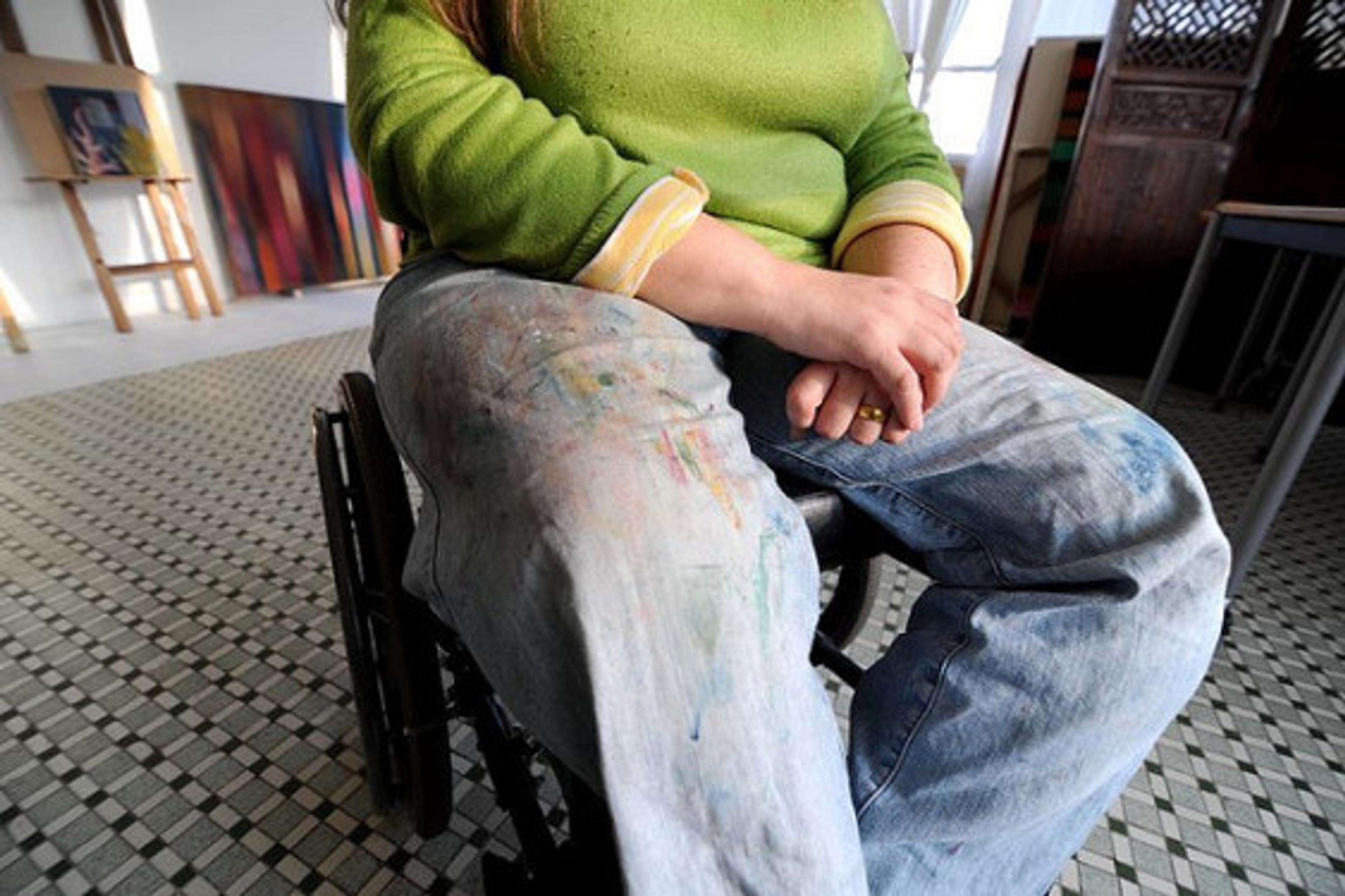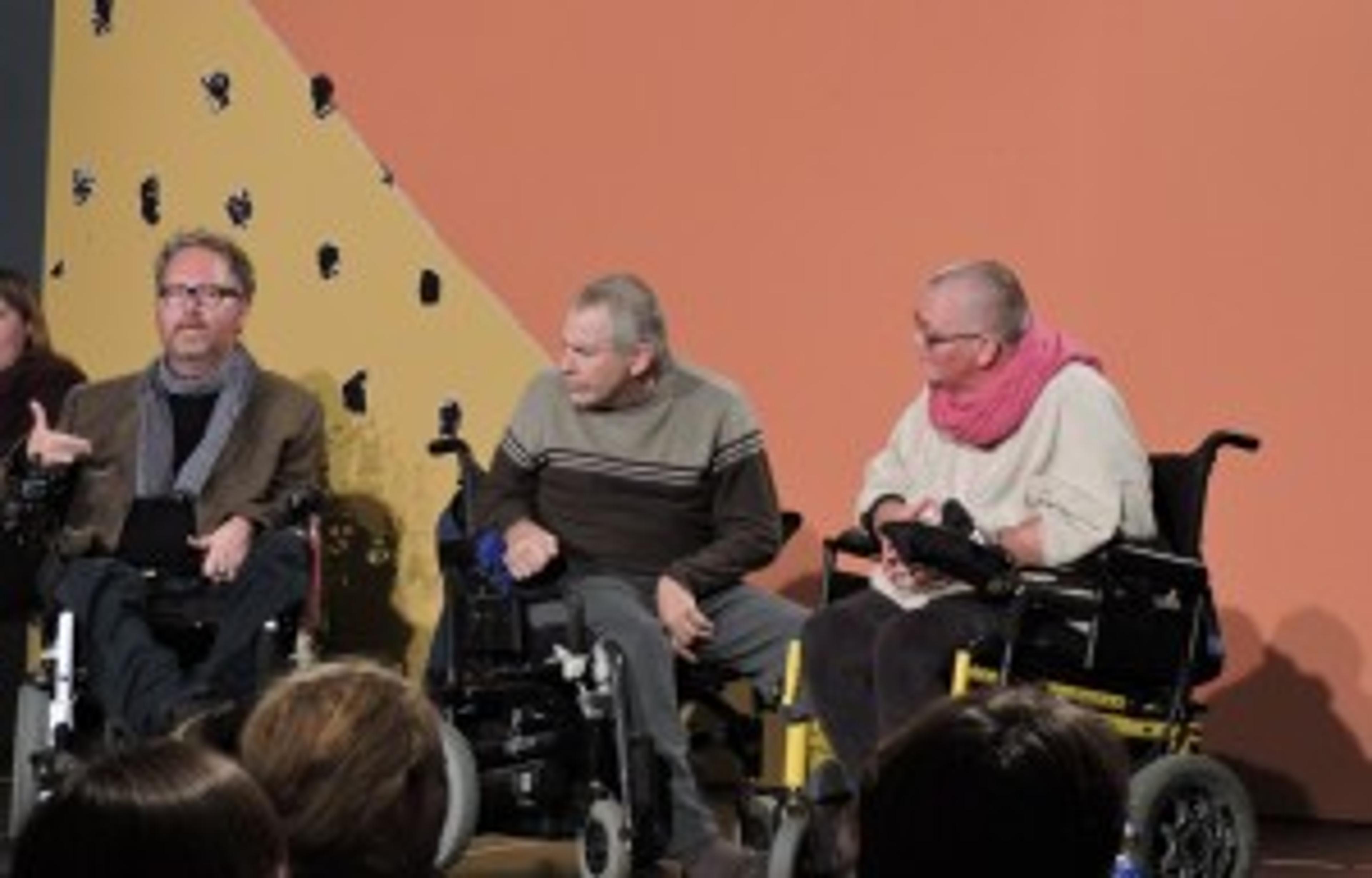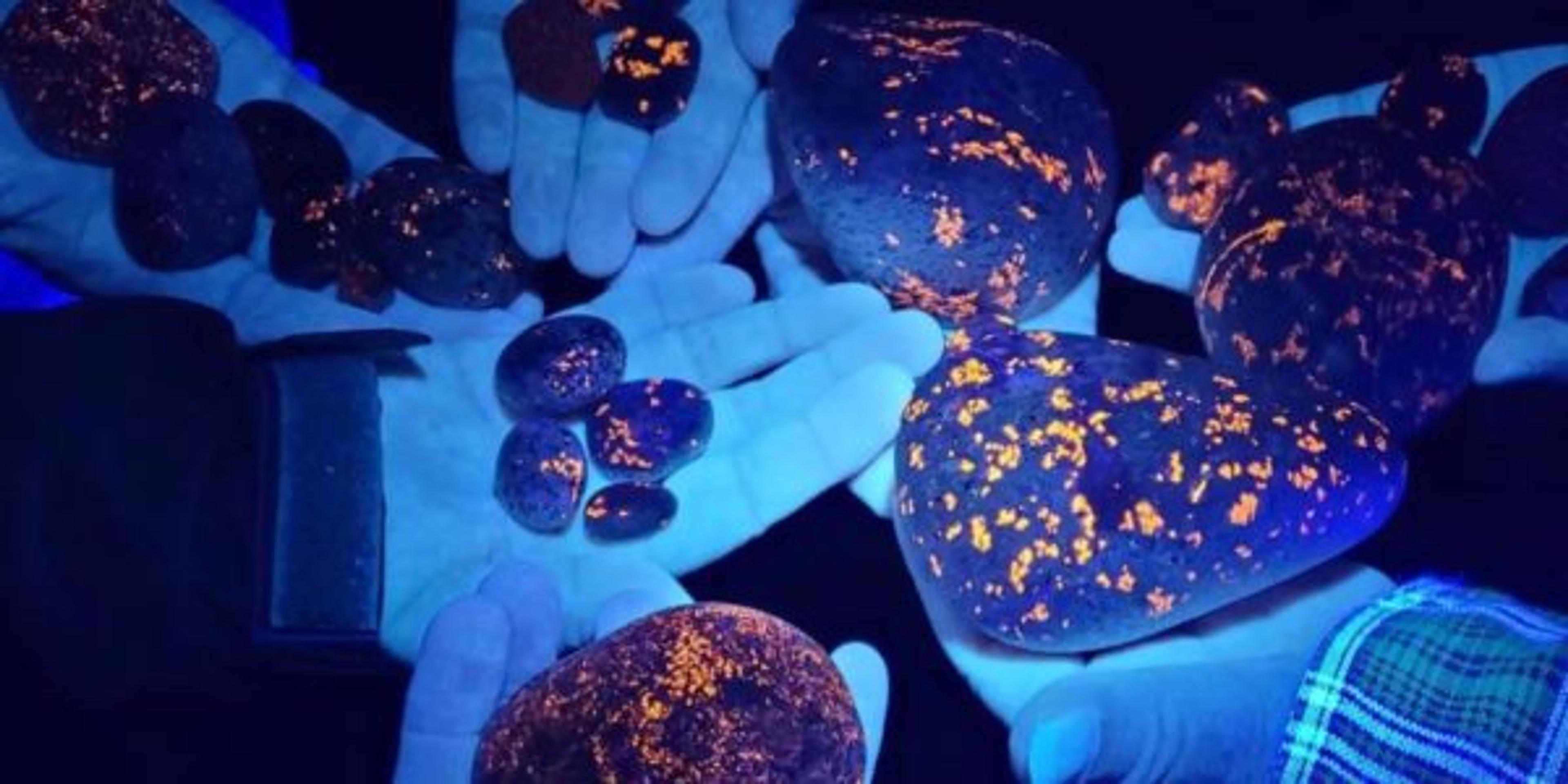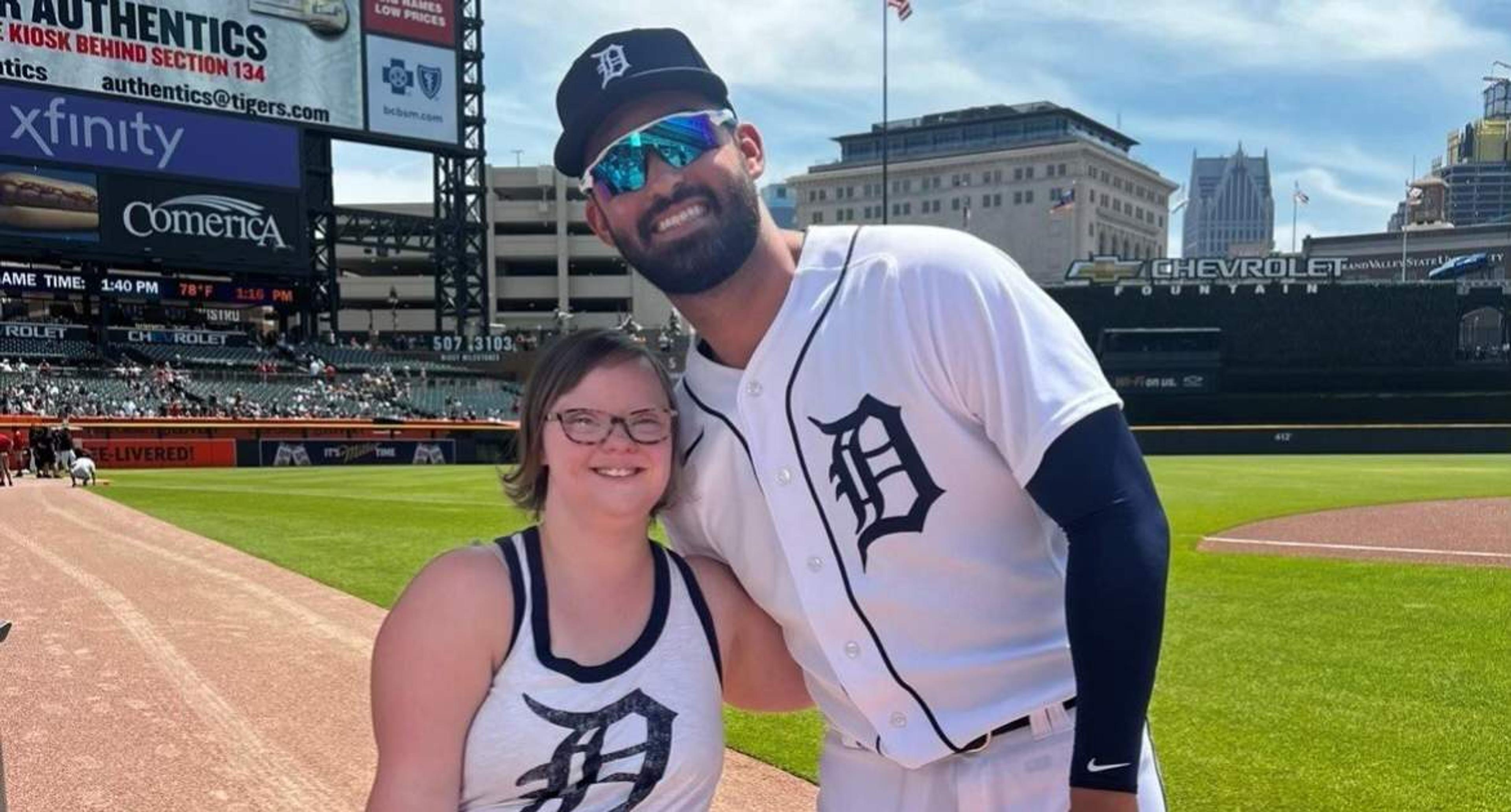ArtPrize 2014: “Disability Is An Art”

Julie Bitely
| 4 min read

For people with disabilities, art, and for that matter, society and media in general, often don’t reflect their unique reality.
A panel discussion about art and disability held as part of this year’s ArtPrize Critical Discourse series found much to be encouraged about, in terms of the inclusiveness that the world’s largest art competition holds.
“ArtPrize is all about an aesthetic that reflects us back,” said panelist, artist, and choreographer Petra Kuppers, who is disabled.
Christopher Smit, a media studies professor at Calvin College and the Director of DisArt, an upcoming Grand Rapids disability-focused arts festival to be held in April, moderated the discussion with Kuppers and Neil Marcus. Marcus is a playwright, actor, poet and performance artist, who is also disabled. Kuppers translated his thoughts throughout the discussion.
To set the tone for the night’s talk, they started with the following quote from Marcus on a slide: “Disability is not a brave struggle or courage in the face of adversity. Disability is an art. It’s an ingenious way to live.”
The panel discussed some of the artwork they found at ArtPrize that either represented someone with a disability, opened up conversation about disability or difference, or was created by someone who is differently abled.
All agreed that a more inclusive art world is important in alleviating the oppression that can come from disability in the form of isolation, lack of access, touch, and aesthetics that reflect disability, and an immobility of spirit. Kuppers explained that these forms of isolation aren’t unique to disabled people, but oppressive to humans in general; something art can and should penetrate.
Here are the pieces the panel discussed. Round 2 ArtPrize voting ends Thursday night at 11:59 p.m. and entries can still be viewed through Sunday.
Bower: The subject of this painting is the artist’s disabled daughter. You wouldn’t necessarily realize she’s disabled by looking at the artwork, and the artist, Tim Lowly, describes it this way in his artist’s statement.
“Temma, who has appeared in my work frequently, is, one might say, the incarnation of powerlessness. But while this image of her bowing is perhaps indicative of her “state” in the scheme of our culture’s power structure, her size in this representation seems to question that conventional understanding of power.”
“There is a lot of stigma about disability and it is sort of invisible in the whole culture,” Marcus said.
Soldier: Large-scale photos of soldiers’ faces who’ve returned from active duty in Iraq and Afghanistan depict a moment of shared difference, Kuppers explained. She said it made her wonder about the visible and hidden impairments soldiers may be coming home with.
I Am Not Who You Think I Am/ No Soy Quien Crees Que Soy: A collection of sculpted faces that reflect different facets of the artist and humanity in general, panelists felt his installation captured the ruptured reality that can also be found in being disabled.

Moderator Christopher Smit, with panelists Neil Marcus and Petra Kuppers, discuss representations of disability in the artwork found at ArtPrize 2014.
“Disability is all over the place,” Smit said, “whether the artist realized it or not.”
Full Moon Circus: This large-scale painting depicts a circus scene. Kuppers explained that circuses and freak shows are a big part of disability culture, with many feeling a sort of kinship. She said she liked the many representations of “freaks and outsiders” and said the work played into the fascination of “what marks the edges of humanity.”
A Case of Living: Heirloom: This painting depicts a woman trying on her father’s prosthetic arm. Smit said at first he was somewhat annoyed at the idea of someone not needing a prosthetic putting it on, but his attitude shifted upon further reflection. He said he walked away liking the idea of an able-bodied person attempting to “try on” her father’s disability as a way to better understand him.
Indio Bunting: An indigo bunting bird is drawn in pencil and Prismacolor marker in painstaking detail. Panelists said the artist is cognitively impaired, but their talk with him revealed a beautiful immersion in his process and the millions of tiny feather strokes he used to create his artwork.
We Do Art So We Don’t Die: Created by a former Artists Creating Together student, Smit said the mixed-media artist’s self-portrait is a fitting sentiment for disabled artists and for the upcoming DisArt festival.
The Distance Between Us: A series of photographs of a young man with cerebral palsy taken by his twin brother, who has no disability. Panelists said the idea of the guilt felt by the artist, that he doesn’t suffer while his twin does, was just one side of the story. They wished they could hear from the photographs subject about how he feels.
“I’d love to hear from him,” Kuppers said.
Photo credit: Edwin Lee





